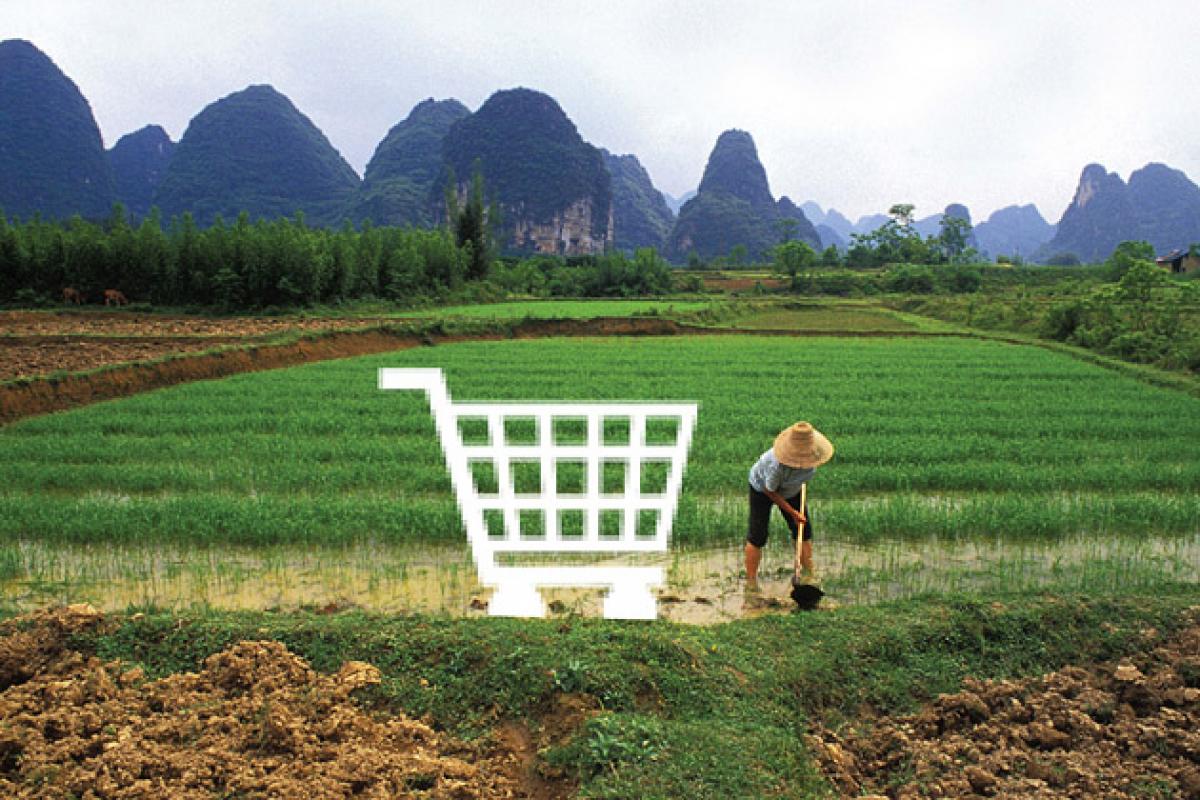Live
- WPL 2025 auction: Nandini, Kamalini set to be most sought-after names
- MP CM to inaugurate Sarsi resort in Shahdol, 200-bed hospital in Mauganj today
- TGPSC makes arrangements for Group-2 exams to be held tomorrow
- WPL 2025 Auction: When and where to watch, date, time, live streaming, venue
- Japan: Citizens protest US military-related sexual violence
- Buy on dips strategy working well in Indian stock market amid sharp rebound
- Sri Lanka concludes sovereign bond restructuring
- Lal Krishna Advani hospitalised at Delhi's Apollo Hospital
- Modi performs puja at Triveni
- Jammu records season’s lowest minimum temperature as Kashmir valley shivers
Just In
How Rural India is reaping the benefits of e-commerce revolution


However, such shipments are energy intensive. For a small item the packing is almost three-to-four times its size. This is waste of material, and adds to the weight of shipment and to the transport energy cost.
I stay in rural Maharashtra. We have reached a stage in life where we hardly shop but sometimes need specialty items like books, computer peripherals, herbal teas and the like. These items are not available in our rural town of Phaltan where we live and so we do online shopping. In the last year or so we have discovered the power of such shopping.
In the recent past, we would go once a month to Pune (110 km away) to buy a few things. Now because of online shopping, such trips have drastically reduced - and for good reason. It takes about three hours to reach Pune, driving over pot-holed roads, which produces back pain. Besides, the traffic jams and pollution in or near Pune add to the discomfort. Also going to Pune for a few items was quite a chore and waste of energy and time. Now online shopping allows us the luxury of getting all sorts of items at home.
Such online shopping is being discovered in all rural towns and areas around the country. However, for such e-commerce to take place, it is necessary to have a good internet connection, ability to sift through the various items offered and zeroing on selection of quality material. All this is possible by googling the items and comparing their prices and specifications.
I find that the rural population is learning this search-and-pick at amazing speed - which is reflected in the increase of sales in rural areas via online shopping. They also order items seen on TV ads and those passed by word of mouth. With mobile penetration in rural India, this shopping is also facilitated by various smartphone apps so that desktop PCs are not required.
Nevertheless, this online shopping is fuelling consumerism in rural areas and is the engine which is helping it to urbanize. It is happening because it produces a win-win situation. For example, one can get quality goods at substantial savings as they are usually much cheaper than what one would pay in a shop in Pune or other big cities. Besides, most of the time the goods are shipped free and cash-on-delivery basis. Also, the time and energy used in actual shopping and going to the big city are saved.
This is the reason why e-commerce has spread so rapidly all over the world and rural India is only now getting the benefits of this revolution.
The foray of the online companies in rural India is also fuelling the job market - it is providing employment to a large number of rural youth as delivery boys. Besides, it has given a shot in the arm to loss-making India Post since their large network of postmen is being used by e-commerce companies to penetrate rural areas.
However, such shipments are energy intensive. For a small item the packing is almost three-to-four times its size. This is waste of material, and adds to the weight of shipment and to the transport energy cost.
Secondly, quite a number of times, the item which is manufactured locally is shipped to big cities and then again to the final destination. For example, we ordered a packet of mango pickle (of a brand that is not available in Phaltan) which is manufactured about 45 km from our rural town. This packet was shipped to Bangalore from where it came to us. This is a real wastage of energy in transport but the shipping company may be finding it cheaper to do so for whatever reasons. Yet with all this travelling around we got this packet at nearly half the price of what we would have paid in a Pune shop.
So, how do companies like Amazon, Flipkart, Snapdeal and others who have big online presence in India still make money on such transactions? Data from their financials reveals that presently all of them are losing money - primarily because it is the start of e-commerce boom in India.
However, they feel that there is a great future in online shopping and with time, their profits will increase. Thus only those companies with deep pockets will survive since they alone have the staying power to penetrate the rural markets.
By Anil K. Rajvanshi
(The author is the Director of the Nimbkar Agricultural Research Institute (NARI) at Phaltan in Maharashtra. He can be reached at [email protected])

© 2024 Hyderabad Media House Limited/The Hans India. All rights reserved. Powered by hocalwire.com






